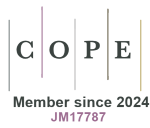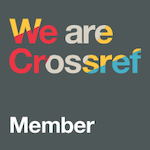Enhancing regulatory affairs in the market placing of new medical devices: how LLMs like ChatGPT may support and simplify processes
DOI:
https://doi.org/10.33393/ao.2024.3302Keywords:
Artificial Intelligence (AI), CE marking, ChatGPT, Large Language Models (LLMs), Medical Device Regulation (MDR), Prompt Engineering, Regulatory AffairsAbstract
The market placing of a medical device in compliance with the requirements of EU Regulation 2017/745 (Medical Device Regulation) demands advanced regulatory expertise and a high level of detail and depth, inevitably leading to significant human and time resources. In an era where Artificial Intelligence (AI) is already present in various aspects of daily life, the potential and opportunity to use AI tools in the scientific field, such as the CE marking process of medical devices, are being explored. This process consists of several phases and related activities, some of which have been chosen as significant examples to evaluate how and to what extent AI can add value in achieving their compliance.
The article presents the overall results in terms of performance and reliability derived from generative AI tests using Large Language Models, such as ChatGPT, applied to some of the processes necessary for the market placing of a medical device. The method used focuses on the relationship between prompt quality and output quality, demonstrating the importance of prompt engineering in using these tools effectively alongside regulatory processes. It also emphasizes the need for end-users to have education, training, and understanding of the mechanisms of generative AI to optimize performance.
References
- Regulation (EU) 2017/745 on medical device. https://eur-lex.europa.eu/legal-content/EN/TXT/?uri=CELEX%3A32017R0745 Accessed September 2024.
- IMDRF MDCE WG/N56 on Clinical Evaluation. Clinical Evaluation | International Medical Device Regulators Forum. https://www.imdrf.org/documents/clinical-evaluation. Accessed September 2024.
- IMDRF/GRRP WG/N47. Essential principles of safety and performance of medical devices and IVD medical devices. https://www.imdrf.org/sites/default/files/docs/imdrf/final/technical/imdrf-tech-181031-grrp-essential-principles-n47.pdf. Accessed September 2024.
- MEDDEV 2.1/3 Revision 3. https://health.ec.europa.eu/document/download/c1a6aa0b-d8c8-498b-8ed4-9f3c6211896d_en. Accessed September 2024.
- MEDDEV 2.7/1 Revision 4. https://www.medical-device-regulation.eu/wpcontent/uploads/2019/05/2_7_1_rev4_en.pdf. Accessed September 2024.
- MDCG 2020-6. https://health.ec.europa.eu/document/download/a6d29444-b5d5-4afb-8024-10be85256aa7_en?filename=md_mdcg_2020_6_guidance_sufficient_clinical_evidence_en.pdf. Accessed September 2024.
- IEC 62366-1:2015 Medical devices – Part 1: Application of usability engineering to medical devices. https://store.uni.com/iec-62366-1-2015. Accessed September 2024.
- FDA – Good machine learning practice for medical device development: guiding principles. https://www.fda.gov/media/153486/download. Accessed September 2024.
- Vaswani A, Shazeer N, Parmar N, et al. Attention is all you need. arXiv:1706.03762. https://arxiv.org/abs/1706.03762. Accessed September 2024.
- Di Bello F Unraveling the Enigma: how can ChatGPT perform so well with language understanding, reasoning, and knowledge processing without having real knowledge or logic? AboutOpen, 2023;10(1):88-96. https://doi.org/10.33393/ao.2023.2618 DOI: https://doi.org/10.33393/ao.2023.2618









